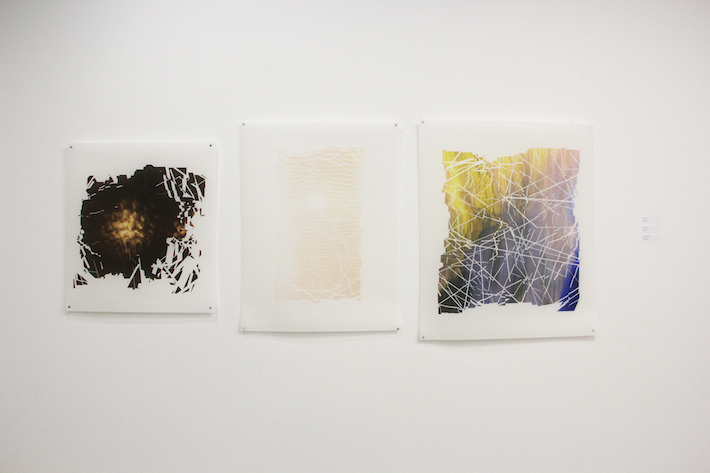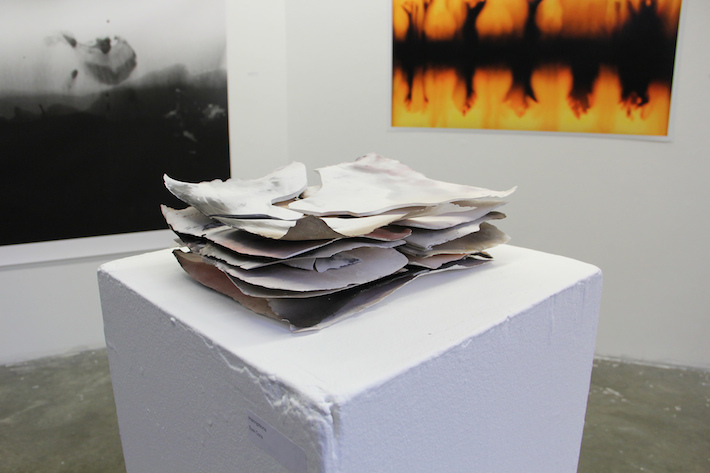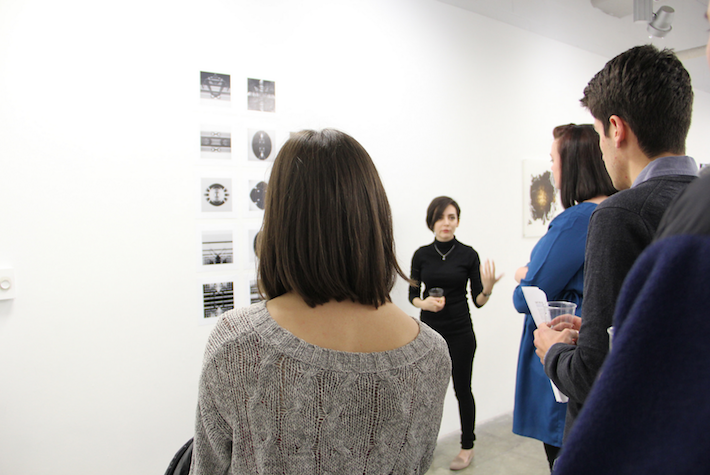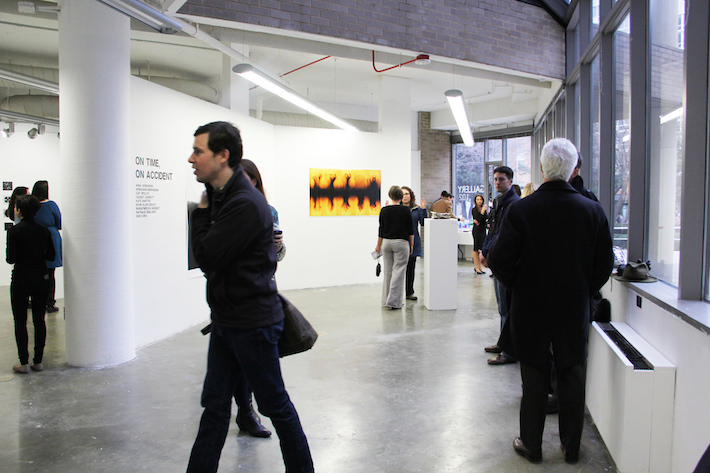M.F.A. student Cassidy Garbutt’s first curatorial project was born out of a 26-page essay by Canadian artist Moyra Davey that she read in class last semester. In the piece, “Notes on Photography & Accident,” Ms. Davey examines the seminal works of writers like Walter Benjamin and Susan Sontag to punctuate her own thesis: that “accident is the lifeblood of photography.”
Not just photography, Ms. Garbutt thought. “Accident” was a capacious theme and applicable to myriad forms of art—including Ms. Garbutt’s own painting practice, where she adds and removes layers of paint, ink, and photographic chemicals to create a cyclical way of working that allows for layers to emerge, retract and interact through accident.
“Things happen in the process that I don’t anticipate,” she said. “And often, those moments of chance are the most interesting for me.”

While working in San Francisco, Ms. Garbutt collaborated with other artists who also incorporated accident into their work. Later, she came to George Washington University to complete an M.F.A. in fine arts and became keenly aware of how coincidental and unforeseen forces inspired her peers.
Ms. Garbutt coalesced these different interpretations and mediations into “ON TIME, ON ACCIDENT” currently on display at Gallery 102. The exhibition showcases nine artists whose chance encounters have left literal marks on their performance, ceramic, painting and video.
For example, there’s the work of Susi Cora, an M.F.A. student. Ms. Cora’s process of pit-firing ceramic work is an anachronism in contemporary art. When she releases her work to the flames, she is relinquishing control and trusting that the process will create a photographic journal or documentation of the firing.

M.F.A. student Armaghan Mehrabian and New York City-based artist Ahna Serendren both let the unexpected happen before the camera. Ms. Serendren created “Leda and the Swan,” a work that involves stop-motion animation projected on canvas and gauze. During the process, she noticed her arm in the footage and decided to incorporate those images into the final work.
Similarly, Ms. Mehrabian uses accident while performing in front of the camera. Without looking through the lens, Ms. Mehrabian allows for chance to make its way in the resulting images. She then manipulates and edits them to construct compositions that are evidence of the process.
Ms. Garbutt hopes the concept of accident will provide an entry point for viewers to experience the work.

“Everyone can relate to the idea of accident. By experiencing the assembled work in the gallery, viewers and artists have the opportunity to discuss and reflect on the role of accident in art making,” said Ms. Garbutt. “I hope viewers will think about the ways in which accident can create new openings, pathways and opportunities—by allowing things to happen that weren’t completely intentional, we become much more open to various interpretations of the artistic process.”


